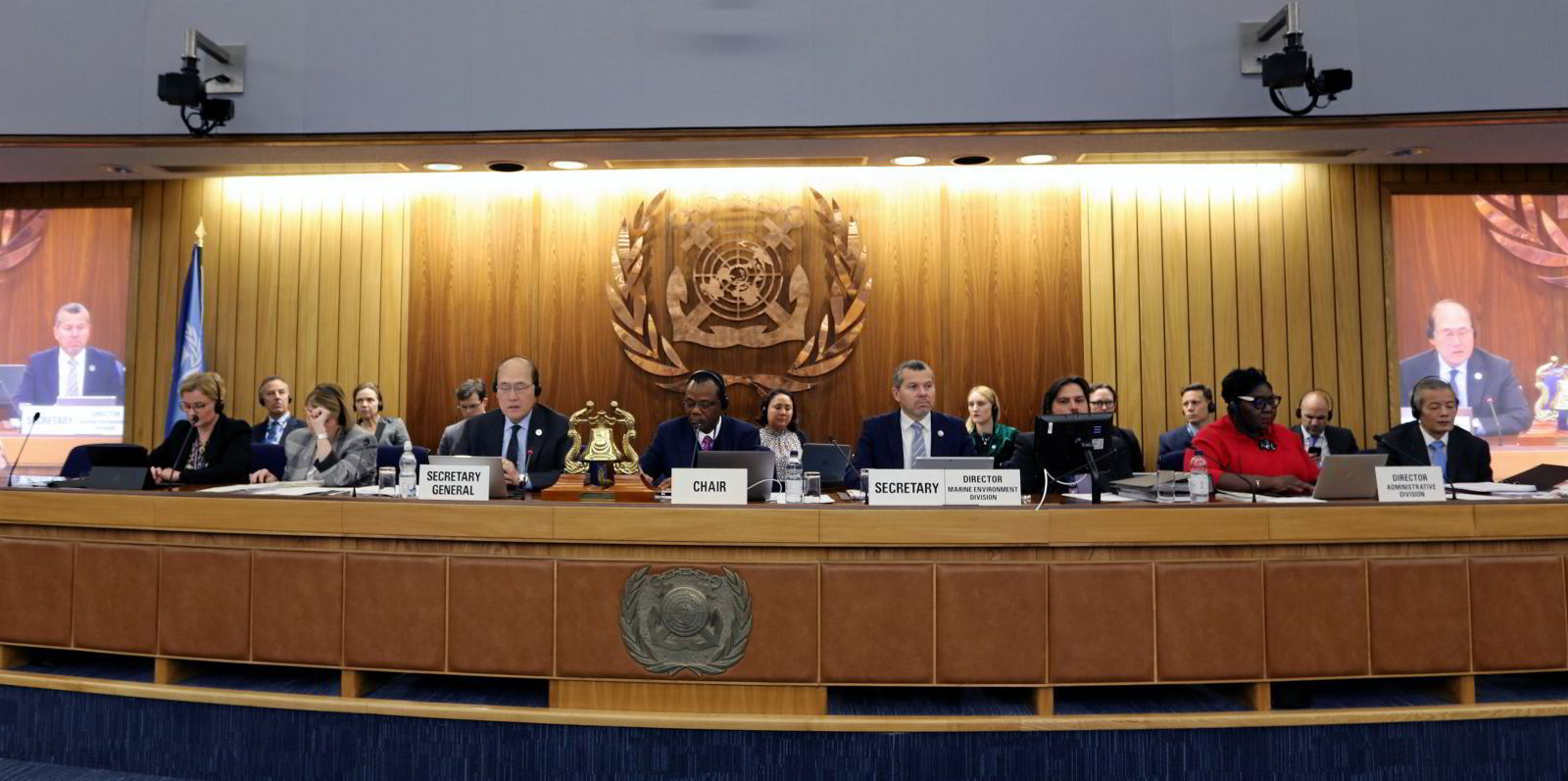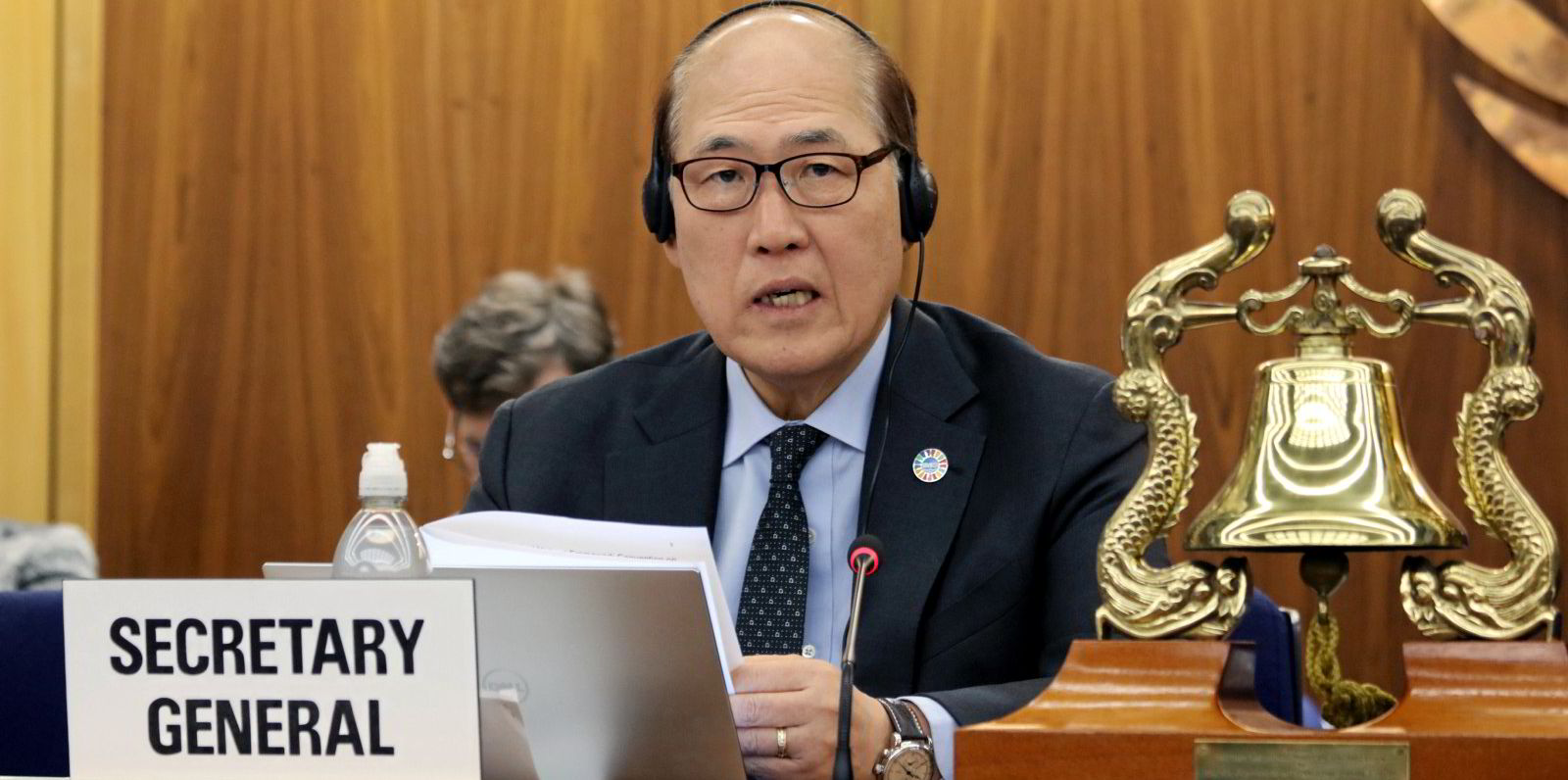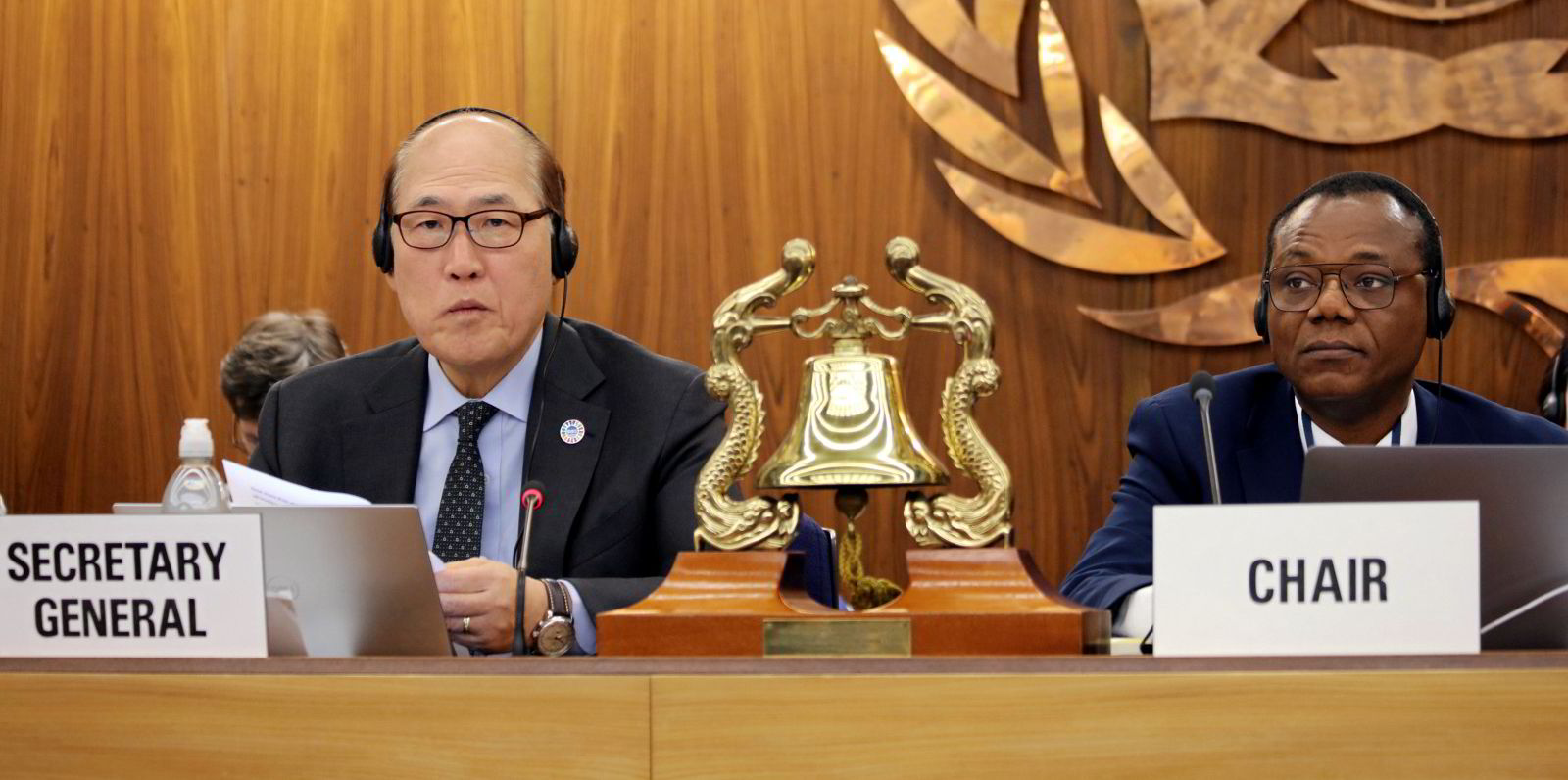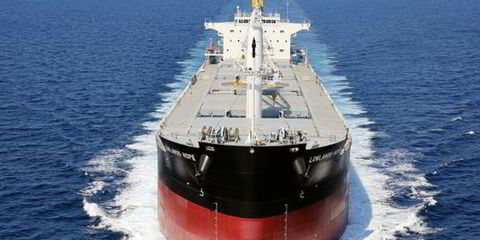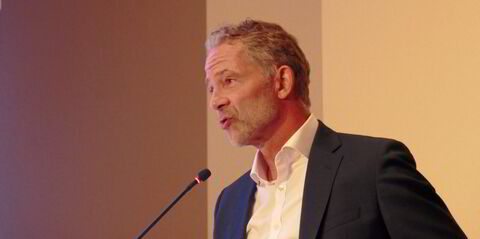Many sides agreed that the International Maritime Organization made progress this month toward what could lead to decision next year to adopt a target aimed at phasing out shipping’s greenhouse gas emissions by 2050.
But, if we may mix metaphors, the mid-century target is just the tip of an iceberg that is a jigsaw puzzle made of moving parts.
What is also under discussion — and in many cases will be after the July meeting of the IMO’s Marine Environment Protection Committee — includes a fuel standard, measures to put a price on carbon, targets for 2030 and 2040, a debate over whether to include upstream emissions and a revision of carbon intensity ratings.
The 2050 target
The July MEPC meeting is expected to adopt a revision to the IMO’s greenhouse gas strategy, which currently aims to chop carbon dioxide emissions by 50% by 2050, relative to 2008 levels.
As TradeWinds has reported, a growing majority of countries have expressed support for a goal of either zero or net-zero greenhouse gas emissions. And the countries that are opposed, a group of 10 middle-income nations that are concerned about the cost of mid-term measures to push shipping toward the topic, have increasingly become isolated.
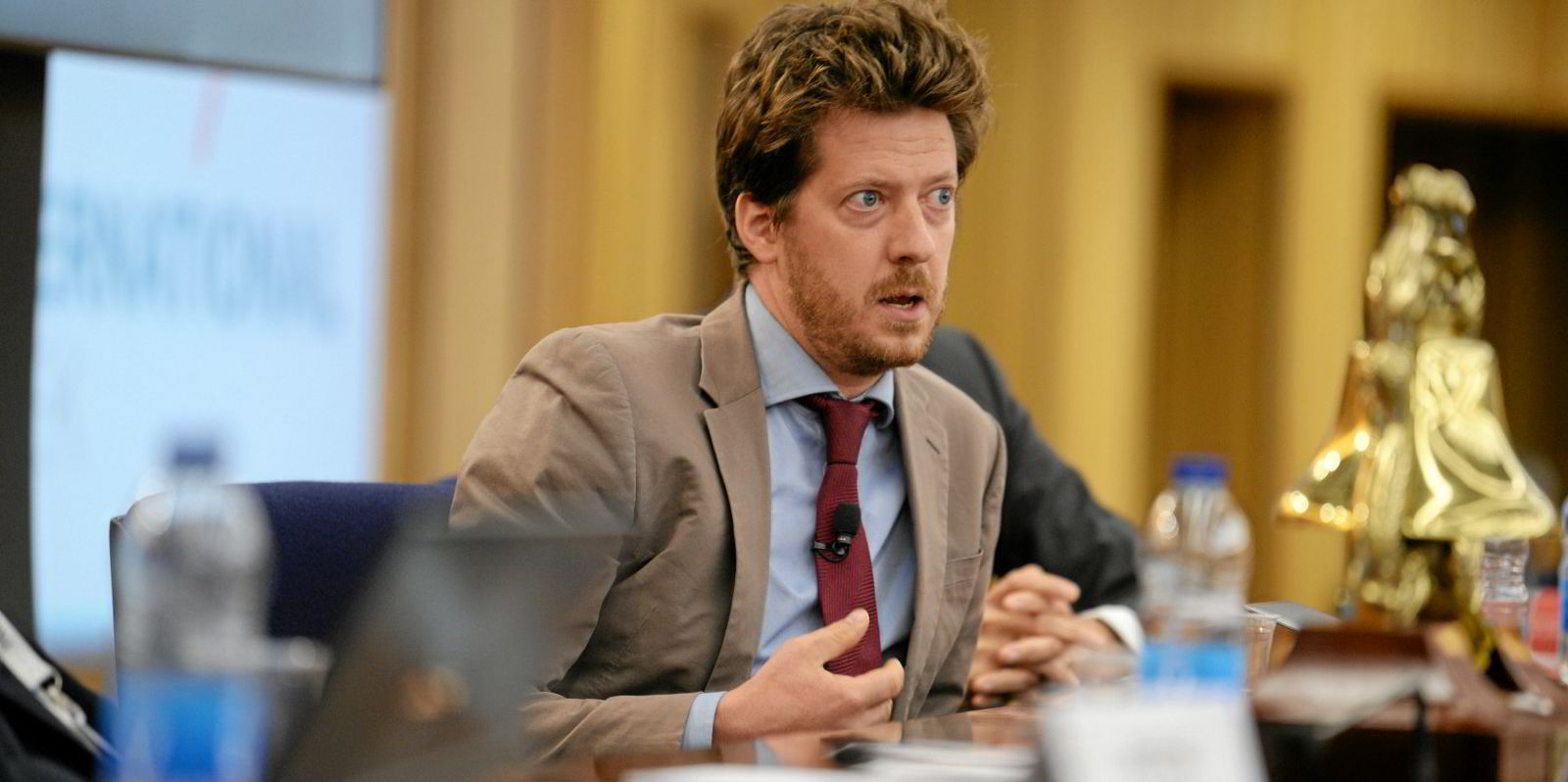
That isolation is important. While the IMO aims to make its decisions on a consensus basis, major decisions are often made with a majority vote, and experts said these nations can risk having less say in the final measure that is adopted if they hold their ground.
Simon Bennett, deputy secretary general of the International Chamber of Shipping, said the ICS not only hopes that the IMO will adopt a more ambitious target in July.
“We’re confident that IMO will agree its revised strategy, which means its more ambitious reduction targets, so that not just shipowners but everyone, including fuel producers, have a clear signal about the direction of travel,” he said.
Stepping stones to 2050
What is important to many IMO watchers are setting interim targets in the decades before the middle of the century.
Tristan Smith, an associate professor in shipping and energy at University College London’s UCL Energy Institute, told Green Seas that a target 25 years from now does not change investment behaviour today. By contrast, 2030 and 2040 targets are important for keeping shipping’s decarbonisation trajectory aligned with capping global warming at 1.5C.
The latest episode of the Green Seas podcast explores the positions of nations that have opposed setting a more ambitious carbon target at the IMO. Find out what is holding them back.
Listen to the episode or subscribe to the podcast on Google Podcasts, Apple Podcasts, Stitcher, Pandora, Spotify and Soundcloud.
“But they’re also really important for what people are specifying and ordering as ships and what people in the energy sector are investing in,” he said.
Some IMO observers expressed surprise at the level of support for strong targets for 2030, just eight years away.
The ICS has proposed requiring 5% of fuel mix to be alternative fuels by 2030, and consultancy UMAS said Saudi Arabia, India and the US expressed support.
But there was also support for bigger greenhouse gas emissions reductions by 2030, with the range of proposals reaching as high as a 47% cut.
If you think shipping companies would be opposed to such a goal in such a short period of time, look no further than a proposal by tanker owner group Intertanko — whose members carry fossil fuels in their ships — to target a 40% cut by 2030 compared to 2008 levels.
Smith said to even get to a 40% cut, shipping would have to reduce its carbon intensity — the amount of CO2-equivalent emissions per tonne-mile — by 64%.
“It would be a radical change in a very short time in the global fleet,” said Smith, who is also a co-founder of consultancy UMAS.
He said a target at that level could push more shipping companies to take slow steaming measures, use fuel-saving technologies like wind assistance and air lubrication, and use more biofuels.
Carbon intensity ratings
How do you push shipping to reach those tough targets? Smith said measures like taxing carbon emissions are not on a path to be adopted in time to make an impact on a strong 2030 goal.
He believes that what could do that is revising the Carbon Intensity Indicator, the rule that begins rating ships by their emissions, distance travelled and cargo capacity. Currently, the regulation aims to cut carbon intensity by 1.5% each year up to 2025, with revisions planned for 2026. More significant annual improvements could help push shipping toward tougher targets, if enforcement is also added to the regulation.

“For it to make a difference to investment, and therefore actual fleet operations, it would also need to have teeth,” Smith said.
Shipping groups have also been pushing for changes, with complaints over the impact that port stays or adverse weather have on the ratings.
In this month’s IMO meetings, progress was made on proposals to rejig the UN body’s data collection system to account for cargo mass and factors like fuel consumption in port. Delegates also discussed making the data more transparent, according to UMAS.
Smith said the cargo mass data will help overcome the way the carbon intensity scores assume all ships are fully loaded. And transparency is important because it will allow individual countries to take action on ships based on their rating, and it will allow private sector actors like financiers and insurers better access to ships’ carbon intensity.
Carbon pricing
The IMO’s July committee meeting is expected to narrow its options for mid-term decarbonisation measures, and the UN shipping regulator had already been gravitating toward a combination of a fuel standard with a mechanism to put a price tag on greenhouse gases.
The recent gatherings saw delegates moving toward a greenhouse gas levy set at a fixed price per tonne of CO2 equivalent, rather than an emissions trading scheme, as a mechanism to price carbon.
Bennett said he saw a increasing traction for the ICS’s proposal for a flat contribution system combined with a reward for vessels that adopt low-carbon or zero-carbon fuels.
“The beauty of that system is that by targeting the funding that’s raised to the first movers, the number of which realistically will be … small in the initial years of implementation, allows you to achieve the objective of reducing the price gap with conventional fuels but in a way that allows you also to keep the quantum of the contribution relatively low in order to get the political agreement we need,” he said.
Bennett said the combination of pricing carbon and rewarding zero-carbon fuels would help overcome concerns of some developing countries about the impact of higher fuel prices.
Fuel standard
But for all the attention that taxing carbon has received in shipping, UCL’s Smith said that the mid-term measure that will really drive fuel transition in shipping is a fuel standard, which he said is under-debated in shipping industry circles despite broad support at the IMO.
Such a rule would ratchet down the carbon intensity of shipping fuels, similar to the way the IMO targeted sulphur emissions with a global cap in 2020.

And for that, the targets for cutting decarbonisation up to 2050 will be important, because whatever targets are set will have to be reflected in the mid-term measures.
“So if the revision of the strategy actually says an 80% reduction in 2040, which is a number that we think is the minimum, then basically you have to be running a ship that by the late 30s, or even by the mid-30s, is going to be operated predominantly on hydrogen-derived fuel,” Smith said.
“And whether or not that’s incentivised by $100, $200 or $300 a tonne — or $50 a tonne — plus a massive fuel standard is, from a commercial perspective, relatively irrelevant.”
Bennett said the ICS is supportive of a fuel standard, but he said the group has a number of questions about the details, particularly about enforcement of the standards when low-carbon fuels are unavailable.
How far up the chain?
The IMO is still working to figure out how to count greenhouse gases in fuels. Does zero emissions, for example, involve a tank-to-wake calculation, which only involves pollution on the ship itself?
Or does it mean zero emissions on a well-to-wake basis? That means greenhouse gases emitted in the production of green fuels increases the calculation, but it also means carbon captured in the upstream value chain can reduce the total pollution.
Tank-to-wake advocates have argued that the IMO only mandates emissions from ships, not those that take place on land.
Smith said in an UMAS report that momentum is building toward a zero-emissions goal with a well-to-wake calculation but without offsetting from out-of-sector sources, such as by planting trees. Those definitions would support both investment in decarbonisation and in zero-carbon fuels.
But he told Green Seas that he is not optimistic that well-to-wake will win the day.
There could be a situation where, for example, the overall IMO strategy could have ambiguous language that leads to a tank-to-wake calculation. Or, it could call for a well-to-wake calculation of zero-emissions in its overall target, but the rules to achieve that goal are set on a tank-to-wake calculation.
“I think it’s a real risk at the moment that we end up with tank to wake,” Smith said.
______________
More news on the environment and the business of the ocean
______________
Only seven Poseidon Principles banks on track with IMO carbon cuts target in 2021
Julian Bray reports that just one-in-four of the financial institutions that signed up to a groundbreaking pledge to benchmark their portfolios against global targets to cut emissions from shipping are on track with meeting those goals.
Only seven of the 28 banks and lenders that reported data to the Poseidon Principles in 2021 were aligned with the International Maritime Organization’s ambition of reducing greenhouse gas emissions from international shipping by at least 50% by 2050. The number is lower than a year earlier when 11 banks were aligned with the target.
The newly published annual report from the organisation admitted there was a hard road ahead for the decarbonisation of shipping, but Poseidon Principles architect and chair Michael Parker said he was not discouraged.
______________
K Line to charter liquefied carbon carriers
K Line will charter the two pioneer 7,500-cbm liquefied carbon dioxide (LCO2) carriers that the emerging carbon capture and storage joint venture Northern Lights is building in China, as Jonathan Boonzaier reports.
The Japanese shipping giant said it would take the pair on long-term bareboat charter once they are delivered by Dalian Shipbuilding Industry Co in 2024 in a move that will see it become a participant in the world’s first full-scale carbon capture and storage value chain.
Both ships will be managed by London-based subsidiary K Line LNG Shipping (UK) and transport LCO2 from industrial emitters, including the Norcem Brevik and Hafslund Oslo Celsio carbon capture facilities, to the Northern Lights CO2 receiving terminal in Oygarden, Norway.
______________
Thenamaris claims delivery of first blue ammonia shipment
An LPG carrier owned by Greece’s Thenamaris has delivered the world’s first commercial shipment of certified blue ammonia, the company said in a social media post, Harry Papachristou reports.
Blue ammonia is one of several candidates to boost green energy in the future. The key difference from regular, higher-carbon “brown” ammonia lies in the carbon capture and storage technologies added to its production.
Several big energy firms have announced projects to increase blue ammonia output in the future, including QatarEnergy and Norwegian producer Yara International in collaboration with JERA, Japan’s largest power generation company.
